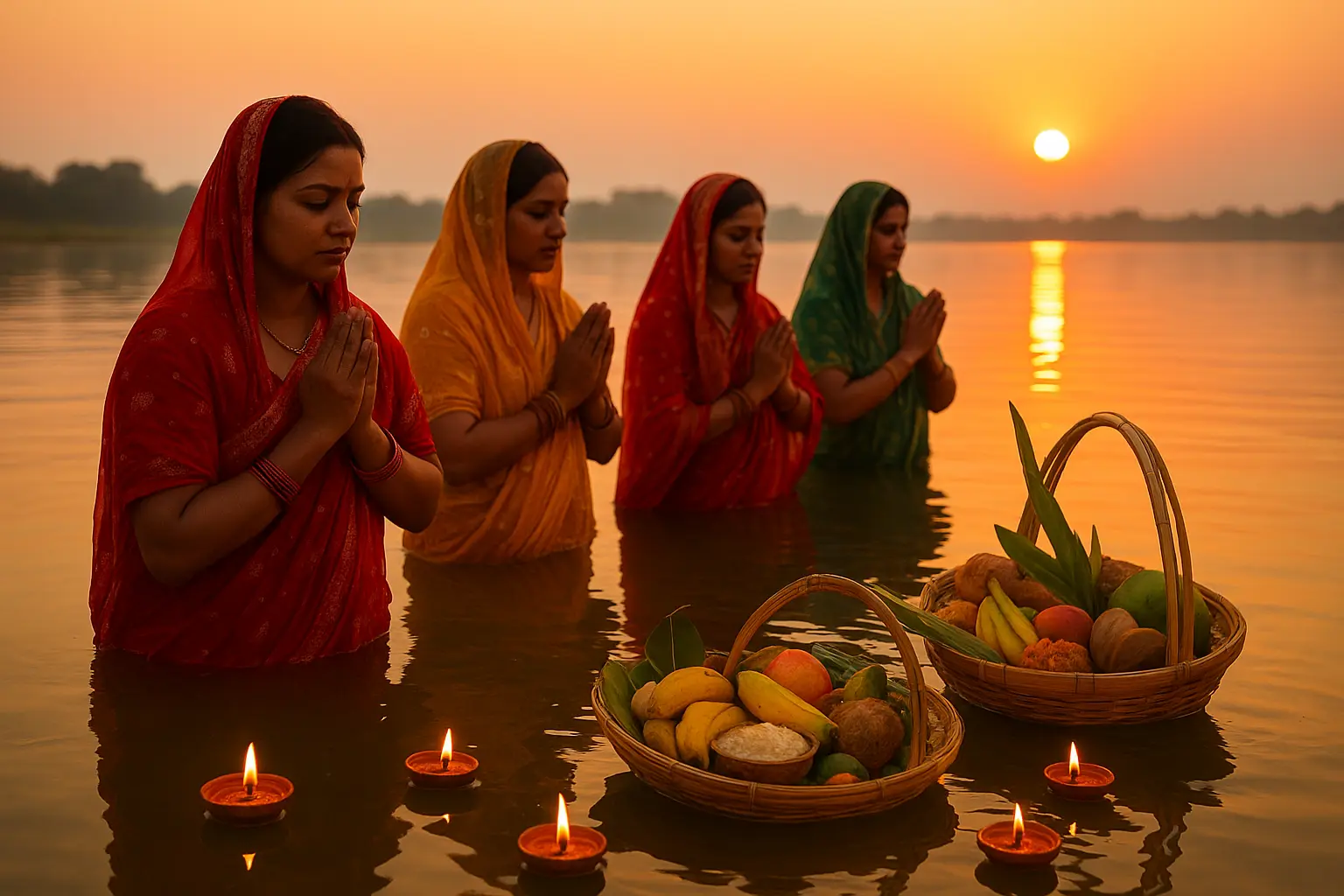Chhath Festival in Nepal
Introduction
Chhath Festival, also known as Surya Shashthi, is one of the most ancient and significant Hindu festivals celebrated in Nepal and parts of northern India. It is dedicated to Lord Surya (the Sun God) and Chhathi Maiya (Usha, the goddess of dawn). The festival honors the sun for sustaining life on earth and promoting well-being, prosperity, and good health. Chhath is mainly celebrated by the Maithili, Tharu, and Bhojpuri communities in Nepal’s Terai belt, particularly in districts such as Janakpur, Birgunj, Biratnagar, and Lumbini.
Celebrated six days after Tihar, the festival lasts for four days, following ancient Vedic traditions that emphasize purity, fasting, and worship without the involvement of priests. Devotees observe this festival with immense faith, offering prayers and gratitude to the rising and setting sun near rivers, ponds, or lakes.
Cultural and Spiritual Significance
The Chhath Festival is unique in its ecological and spiritual depth. The rituals represent a harmonious relationship between humans and nature. The sun, being the ultimate source of energy, is worshipped as a symbol of life and power. By offering arghya (sacred water) to the sun, devotees express their appreciation for light, warmth, and fertility.
The festival also highlights the values of discipline, purity, and simplicity. Every step — from preparing offerings to performing rituals — is done with devotion and respect for the environment.
Rituals of the Four Days
Day 1 – Naha Kha (Bath and Eat):
The first day marks the beginning of the festival with a ritual purification bath in a river or pond, symbolizing the cleansing of the body and soul. Devotees prepare a pure vegetarian meal, often rice and pumpkin cooked in bronze utensils, after thoroughly cleaning their homes.
Day 2 – Lohanda or Kharna:
On the second day, devotees observe a strict fast throughout the day. In the evening, they break the fast after sunset by offering kheer (sweet rice pudding), fruits, and chapati to the Sun God. After this ritual, a 36-hour fast begins, during which even water is not consumed — a display of deep devotion and willpower.
Day 3 – Sandhya Arghya (Evening Offerings):
This is the most spectacular and visually stunning day of the festival. Devotees gather along riverbanks and ponds to offer arghya to the setting sun. The entire atmosphere becomes divine as women, dressed in colorful traditional saris, stand waist-deep in water holding bamboo baskets filled with offerings — sugarcane, fruits, coconut, betel leaves, and diyas (oil lamps). Folk songs dedicated to Surya and Chhathi Maiya echo through the air, creating a serene and spiritual ambiance.
Day 4 – Usha Arghya (Morning Offerings):
On the final day, devotees return to the water bodies before sunrise to offer prayers to the rising sun. This ritual signifies the renewal of life and the blessings of a new dawn. Once the ritual is completed, devotees break their fast by sharing thekua (a traditional sweet made of wheat flour, jaggery, and ghee) and other prasad with family and neighbors. This marks the completion of Chhath, a festival that brings communities together in faith and unity.
Chhath in Modern Nepal
While the festival remains deeply traditional, its spirit continues to grow across Nepal. Even in major cities like Kathmandu and Pokhara, devotees gather near rivers and lakes to celebrate the occasion. Government authorities and local communities organize safe spaces and lighting for worshippers, reflecting how urban Nepal embraces cultural diversity. Chhath has become a symbol of unity — connecting generations through shared belief, discipline, and respect for nature.
Conclusion
Chhath Festival is not merely a ritual; it is a living heritage that connects spirituality with sustainability. The devotion of participants, the serene music of traditional folk songs, and the vibrant lights reflecting on calm waters create an unforgettable atmosphere. For visitors traveling with Jagadamba Holidays, experiencing Chhath in Nepal offers a unique cultural insight into the country’s traditions, values, and deep reverence for nature.






